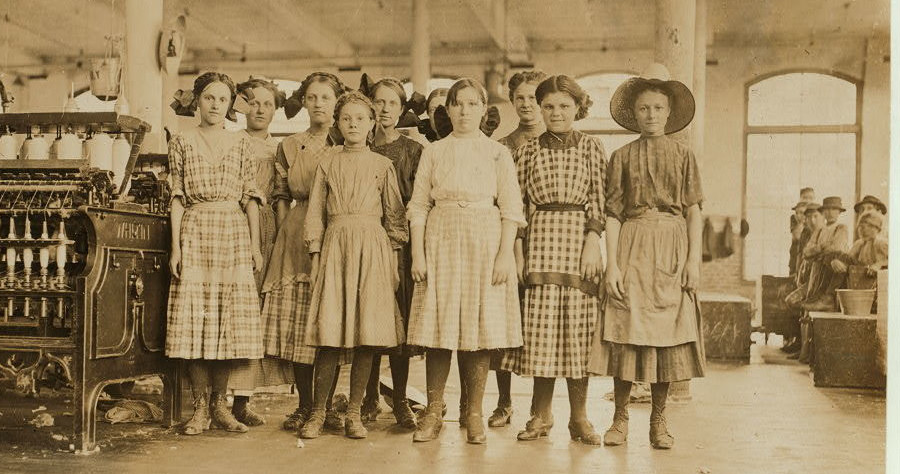 a cotton mill at Fries relied upon waterpower from the New River
a cotton mill at Fries relied upon waterpower from the New RiverSource: Library of Congress, Group of adolescent spinners in Washington Cotton Mills, Fries, Va. The youngest ones would not be photographed (1911)
 a cotton mill at Fries relied upon waterpower from the New River
a cotton mill at Fries relied upon waterpower from the New River
Source: Library of Congress, Group of adolescent spinners in Washington Cotton Mills, Fries, Va. The youngest ones would not be photographed (1911)
Cotton was grown and processed in Virginia before the Revolutionary War. A traveler through Fredericksburg in 1778 visited a "manufactory" and recorded in his diary:1
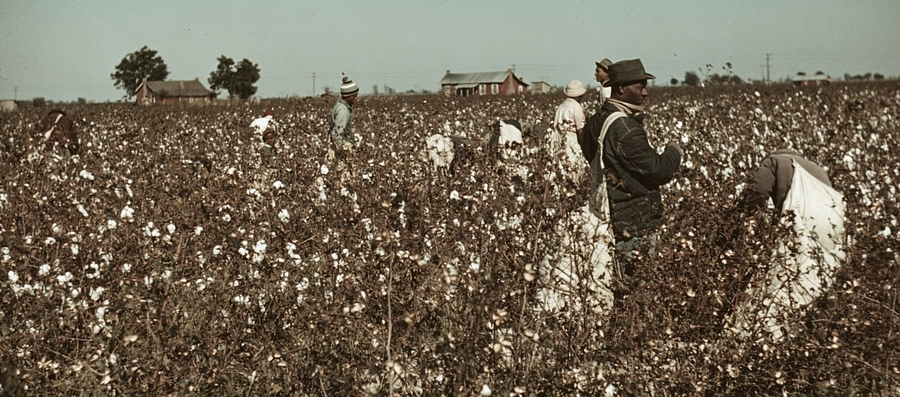
in Virginia and other southern states, cotton was harvested primarily by African-American farm workers before World War II
Source: Library of Congress, Day laborers picking cotton near Clarksdale, Miss. (by Marion Post Wolcott, November 1939)
After the Civil War, investors assembled competing networks of railroads based in part on the ability to transport Southern cotton to Atlantic Ocean ports. Norfolk was one of the destinations.
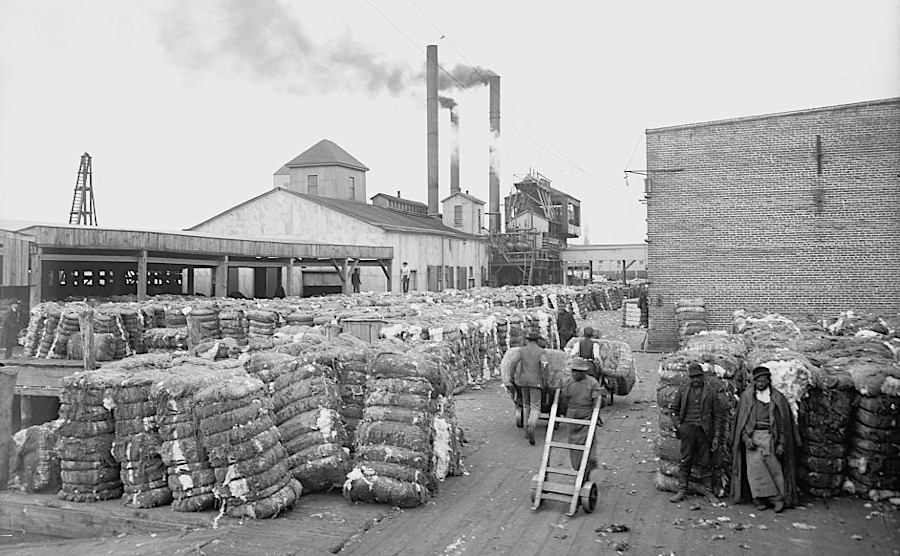 post-Civil War railroad networks shipped cotton to Norfolk for export to Europe
post-Civil War railroad networks shipped cotton to Norfolk for export to Europe
Source: Library of Congress, Norfolk, Virginia, cotton docks (between 1890-1910)
In modern Farm Cash Receipts, the 2017 USDA Census of Agriculture identified cotton as the #13 most valuable crop in Virginia. Cotton generated over $45 million in sales.2
In 2018, nearly 100,000 acres of cotton were harvested. Cotton gins in Virginia processed 184,391 bales that year, but that was not all of the Virginia crop. Each year, some Virginia cotton is processed in North Carolina and some North Carolina cotton is ginned in Virginia.3
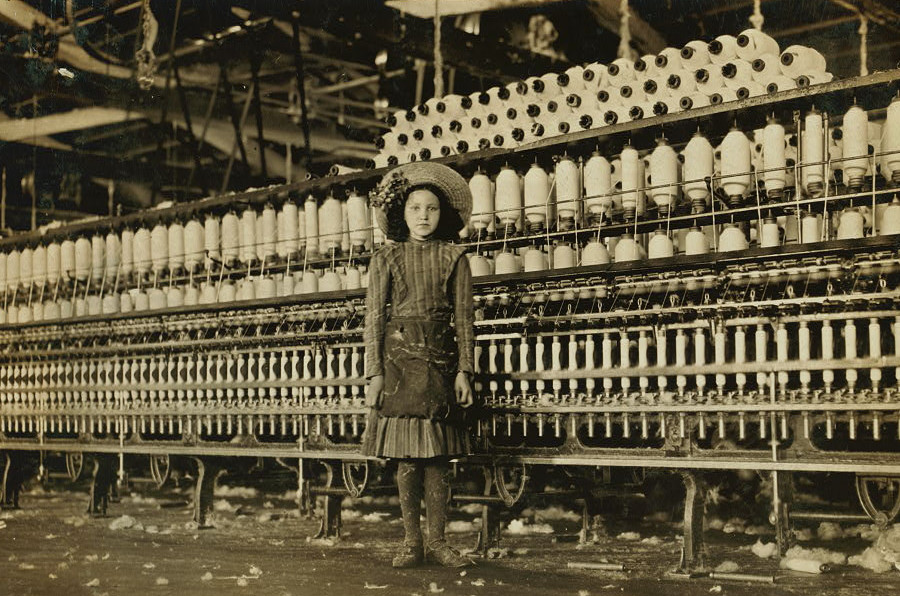 child labor was used in cotton mills in the early 1900's
child labor was used in cotton mills in the early 1900's
Source: Library of Congress, Young spinner in Roanoke (Va.) Cotton Mills. Said fourteen years old, but it is doubtful (1911)
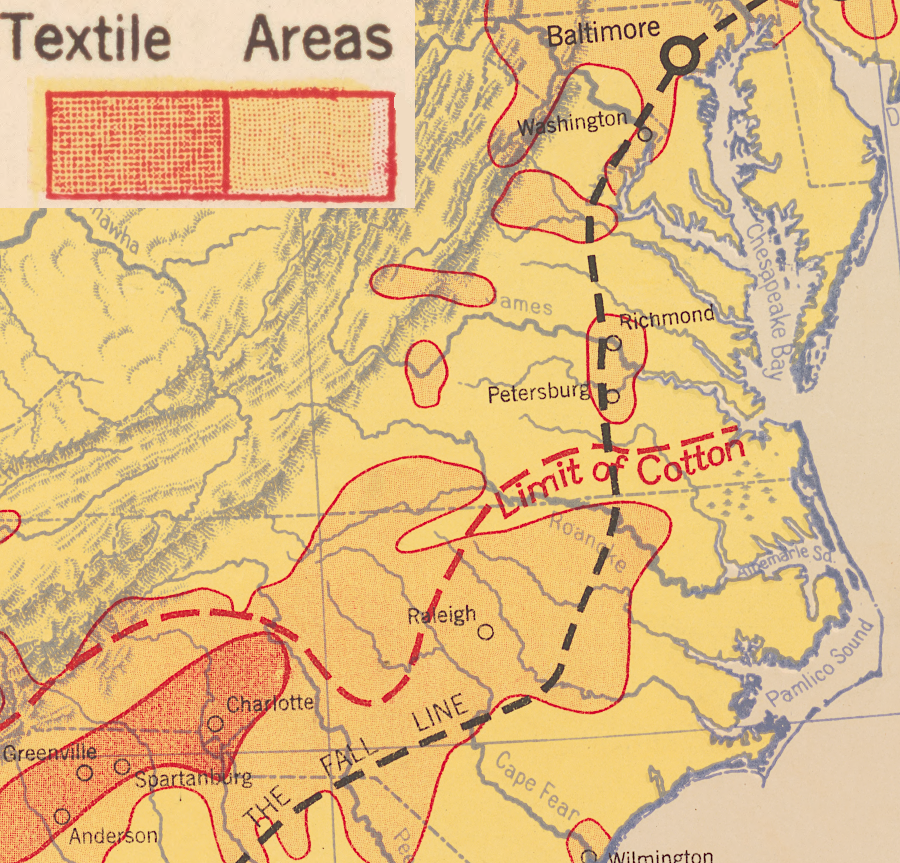
in 1919, textile manufacturing was one of the major industries in Virginia
Source: Library of Congress, Industrial United States (Hart-Bolton American history maps, 1919)